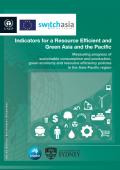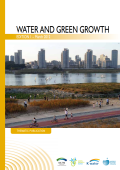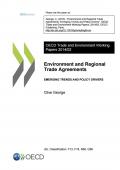
Natural resources are the foundation of economic development. This report reveals the patterns and the evolution of natural resource use with 118 indicators in 26 countries of the Asia and the Pacific region over the last 40 years. The analysis shows that resource use in the region is both inefficient and unsustainable. The Asia-Pacific region will not be able to base its future economic growth on declining costs of natural resources as was possible during most of the twentieth century. An increasing reliance on resources from abroad and volatility in the global resource markets will pose challenges to the economic resilience of countries in the region. In this new economic context resource efficiency and decoupling of economic growth and resource use will be fundamental to the economic success of the region. The knowledge generated by this report helps to improve the understanding of the natural resource use and emissions consequences of economic growth in Asia and the Pacific to support policy formulation, monitoring and policy evaluation in the countries of the region.

This report is the first major output of a project on Water and Green Growth, led by the Government of the Republic of Korea and the World Water Council (WWC). It is the result of over 12 months of research and analysis by an international group of experts. It provides an analysis of 26 case studies that illustrate various aspects of water and green growth, and then uses the analysis to recommend a draft framework for policymakers.
This research focuses on identifying the main policy strategies that could potentially contribute to the advance of three Latin American economies, namely Brazil, Chile and Mexico towards a green growth model that is social and inclusive, given the actual patterns of development of those economies. With this aim, firstly the past and current policies in each country in terms of economic, social and environmental indicators is identified and described. A detailed analysis follows for Brazil, Chile and Mexico, in which the authors propose a series of green growth indicators and choose a definition and classification of green growth sectors. There is also the estimation of an empirical model to explain the determinants of green house gas emissions and deforestation in Latin American countries. This paper broadly identifies the sectors that contribute to its increase and describe the main green policies applied in each country. In turn there is identification of the sectors with higher potential for the future. Finally, policy recommendations and reflections for the future is presented.
This guideline provides practical tools for city planners and decision makers to reform urban planning and infrastructure design according to the principles of eco-efficiency and social inclusiveness. It includes case studies from the Republic of Korea, the Philippines, Japan and Sri Lanka.

This report examines trends in the use of environmental provisions in Regional Trade Agreements and identifies factors which may explain the presence or absence of these provisions. The report builds on work of the OECD Joint Working Party on Trade and Environment (JWPTE) and includes results of an informal survey of delegates.
Analysis of the environmental provisions in RTAs reveals an encouraging upward trend. While basic provisions remain the most common types found in RTAs, the incidence of more substantive provisions has increased significantly in recent years. Among these, environmental co-operation has been the most common type.
Several factors may have contributed to this evolution. These include countries extending their political mandates for RTAs, for example to include provisions for compliance with multilateral environmental agreements (MEAs), as well as a general accumulation of experience with the use of environmental provisions.
The report includes case studies from Australia, Canada, Chile, the European Union, Japan, New Zealand, United States and Switzerland.
